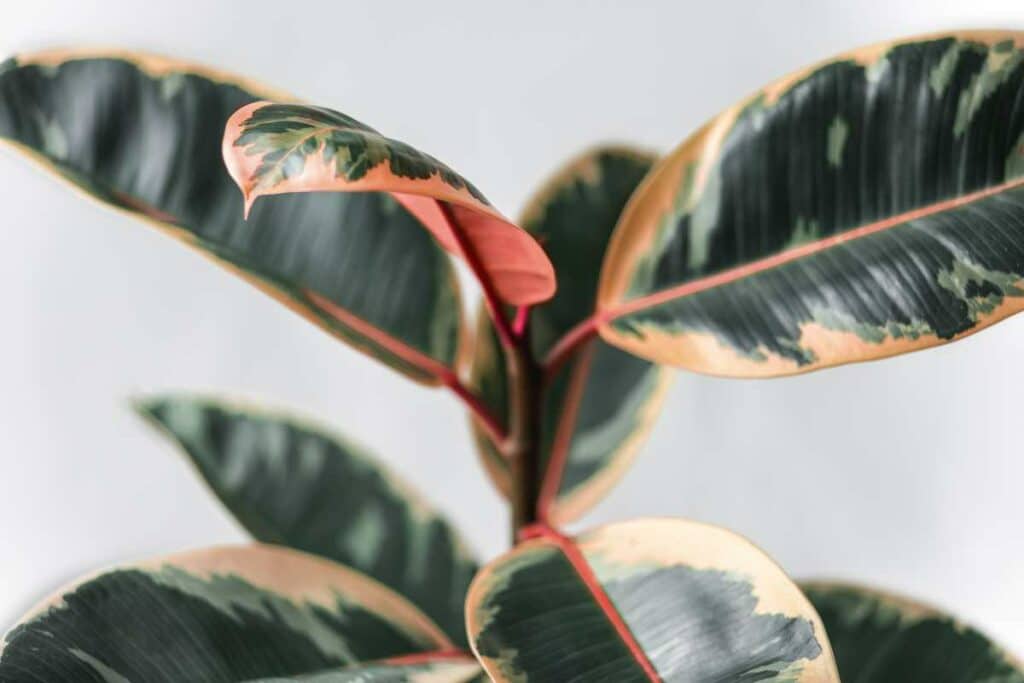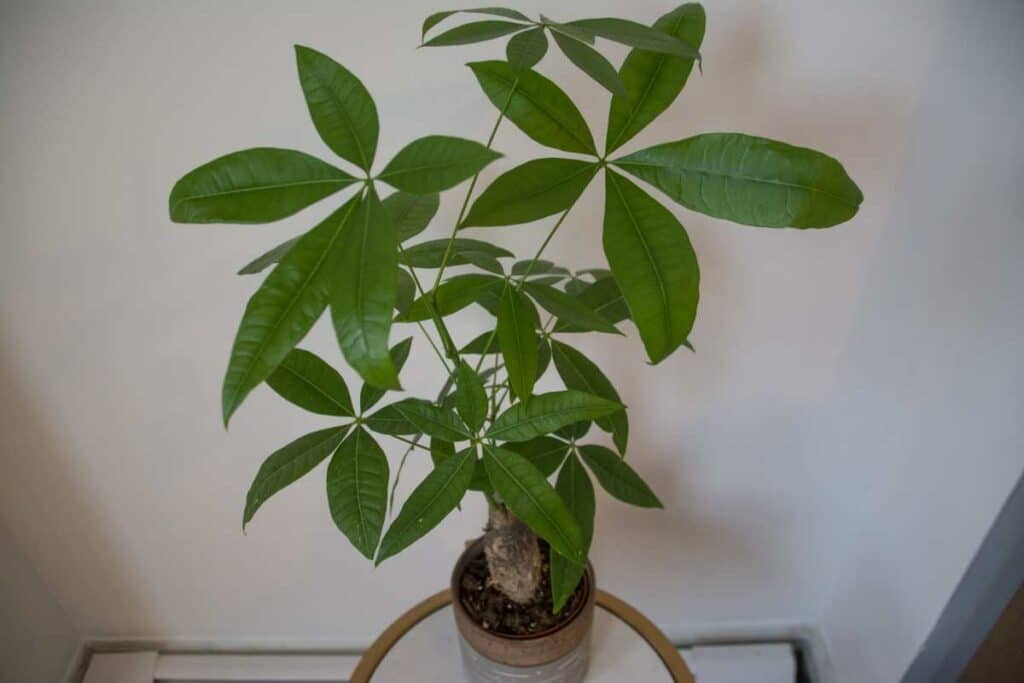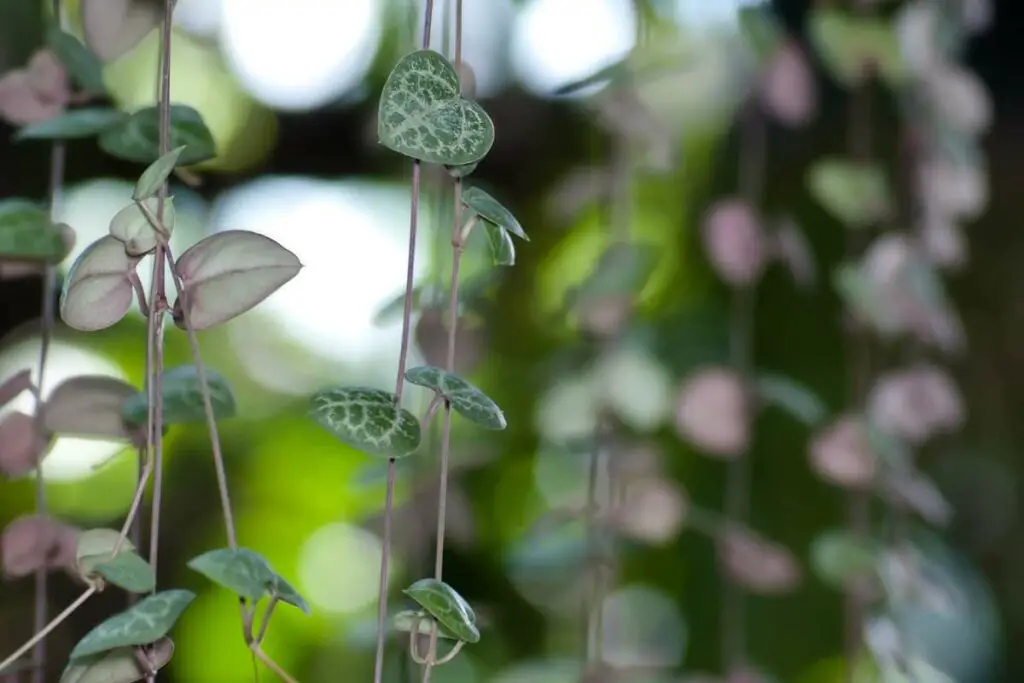If you are planning to make a herb garden, there are a few things that you should know first to make sure you set your garden up for success.
One of the most important factors often overlooked by would-be gardeners is providing your herbs with enough lighting.
The success of your herb garden will rely on how much light each plant receives, with most herbs requiring 6 hours of full sun per day. If you’re growing herbs indoors they will require at least 8-12 hours per day of intense light.
If you’re planning to grow herbs indoors, be mindful that not all herbs grow well in indoor spaces.
Cilantro and dill will struggle to regrow after a cutting is taken, so it’s best to grow these outdoors during the warmer summer months.
Most other herbs will grow totally fine indoors and can withstand trimming throughout their life, growing back and remaining healthy.
They just need enough light to thrive.
Let’s look at the advantages of Sunlight ‘vs’ Artificial light, and then look at some of the most common herbs and the best light requirements for each individual herb.
Why Is Sunlight Good for Growing Herbs?
Sunlight is made up of the light we see in our visible spectrum, as well as infrared light and ultraviolet light (UV).

The heat from the infrared light stimulates plants to grow, and herbs benefit from strong roots structures with more infrared light.
Ultraviolet light gives herbs their intense flavor and this is due to herbs producing essential oils that are stimulated by UV light.
This provides herbs with many of their health benefits to humans when ingested such as antioxidants and anti-inflammatory qualities.
Using an Indoor Artificial Light to Grow Herbs
Artificial lights lack the full-spectrum light field that includes all of the colors emitted by sunlight.
Most artificial lights will emit intense portions of the spectrum, with a strong focus on yellows and orange colors that produce high levels of infrared light.
Choosing the right artificial light is important when growing herbs indoors, and with so many different light shades on the market, it can be difficult to choose the right lights.
Herbs require a full-color spectrum to allow for photosynthesis, and blue and red lights are the most important.
Important: Blue light encourages plant growth, while red light stimulates vegetative growth.
Indoor Fluorescent Grow Lights
Fluorescent grow lights work well and are a good budget option, however, most fluorescents don’t emit the full spectrum that some plants need to thrive.
If using fluorescent growing lights, ensure they have sufficient red (infrared) and blue (ultraviolet) light to give your herbs the best chance!
Full-Spectrum LEDs
Using a full-spectrum LED growing light is the best solution when growing herbs indoors.
As the name suggests, these lights emit the full spectrum of light simulating sunlight.
They’re also very energy efficient which is good news as these lights are likely to be running for 8-12 hours per day.
Light Placement
Herbs like light sources placed directly above, allowing them to naturally grow upwards towards the light source.
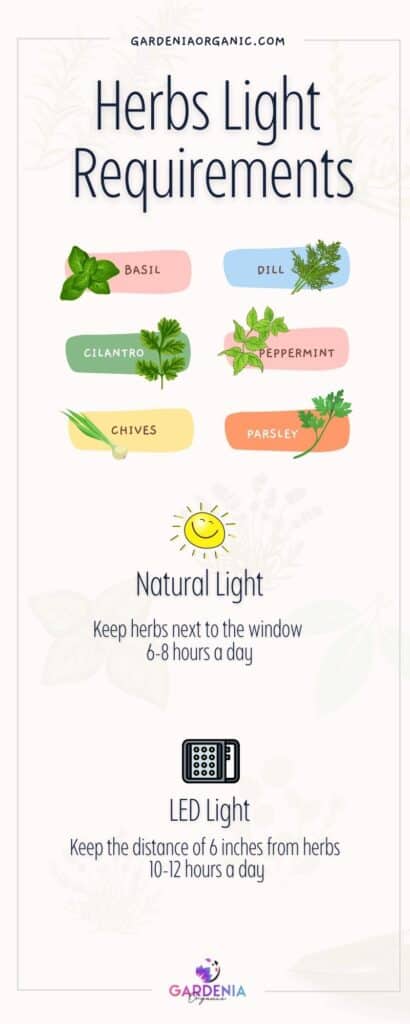
You’ll want to have a grow light set up on a stand that allows you to adjust the height of the light as your herbs grow.
Use a light reflector to bounce as much light towards your herbs as possible.
Different lights give off differing amounts of heat and therefore require different placement above your herbs.
You’ll also need to adjust your light placement as your herbs grow, as the leaves should never touch the light source as they may burn:
- Incandescent lights: 24 inches over your herbs
- Fluorescents: 12 inches above your herbs
- LEDs: 6 inches over your herbs.
If you’re using natural sunlight, placing your plants right by a window where they can receive full-direct sun is the best option for most herbs.
This will allow them to receive as much full sun per day as possible.
Of course, depending on the climate and season, it may not be possible to give them as much light as they need without artificial lights.
Let’s look at the different light requirements for the most popular herbs.
Cilantro
Cilantro has likely caused many curse words from novice gardeners the world over, due to its short life cycle and likelihood to bolt (develop seed) in hotter weather.
However, cilantro is relatively easy to grow under the right conditions.
If you love cilantro, you’ll no doubt want this great herb at hand year-round.
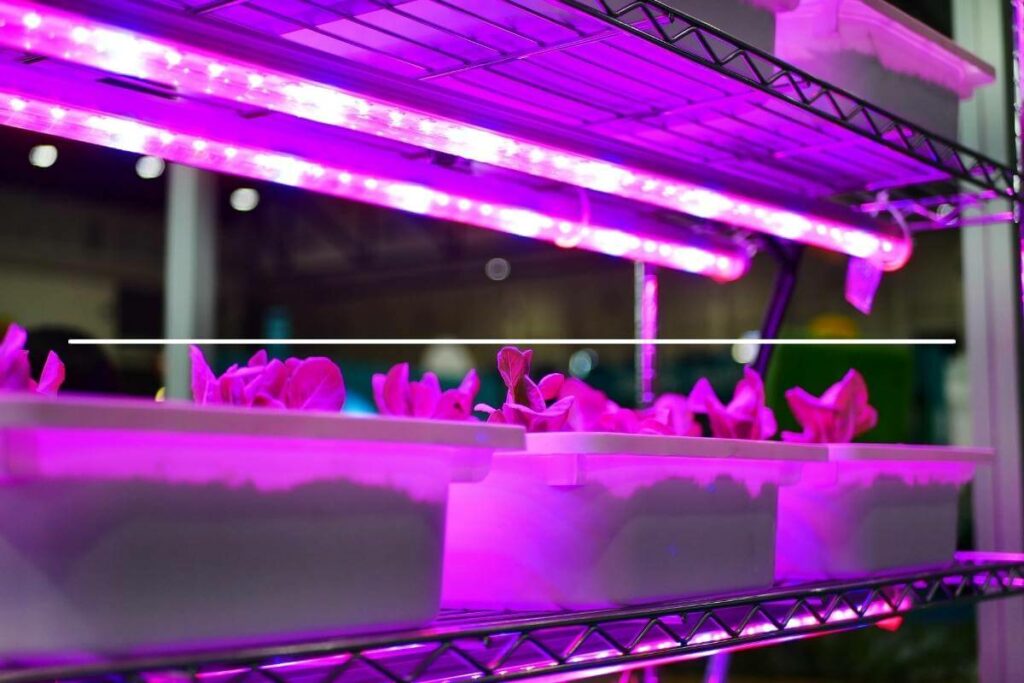
Cilantro Lighting Requirements
Cilantro requires at least 6 hours of full sunlight or around 6-8 hours of partial sunlight.
This can be a little tricky if you’re living in a hot dry climate, as they burn easily when the mercury rises over 95°F (35°C).
Keep In Mind: They’re also very prone to bolting in warmer weather, so you’ll need to monitor and trim any seeds that grow from the main stem.
Cilantro Growing Indoors ‘vs’ Outdoors
Cilantro is a great herb to grow outdoors but can be quite tricky to grow indoors year-round, mainly due to its lighting requirements.
If you’re planning to grow cilantro indoors, they will need at least 6 hours of full sun per day:
- Using a growing lamp will yield better results, especially during the winter months.
- You’ll also need to provide more nutrition to your cilantro plant if planted indoors.
- Always use soil that drains well: a mixture of potting soil and sand allows water to drain easily.
Basil
Basil is a great herb to grow as it’s relatively easy and when grown properly, provides huge bunches of fragrant and tasty leaves that are perfect for cooking.
Basil responds well to indoor and outdoor growing, although you’ll need to keep it away from the cold during the cooler months.
Keep your plant indoors when temperatures drop below 50°F (10°C).
Basil Lighting Requirements
Basil requires at least 6 hours of sunlight each day when potted outdoors.
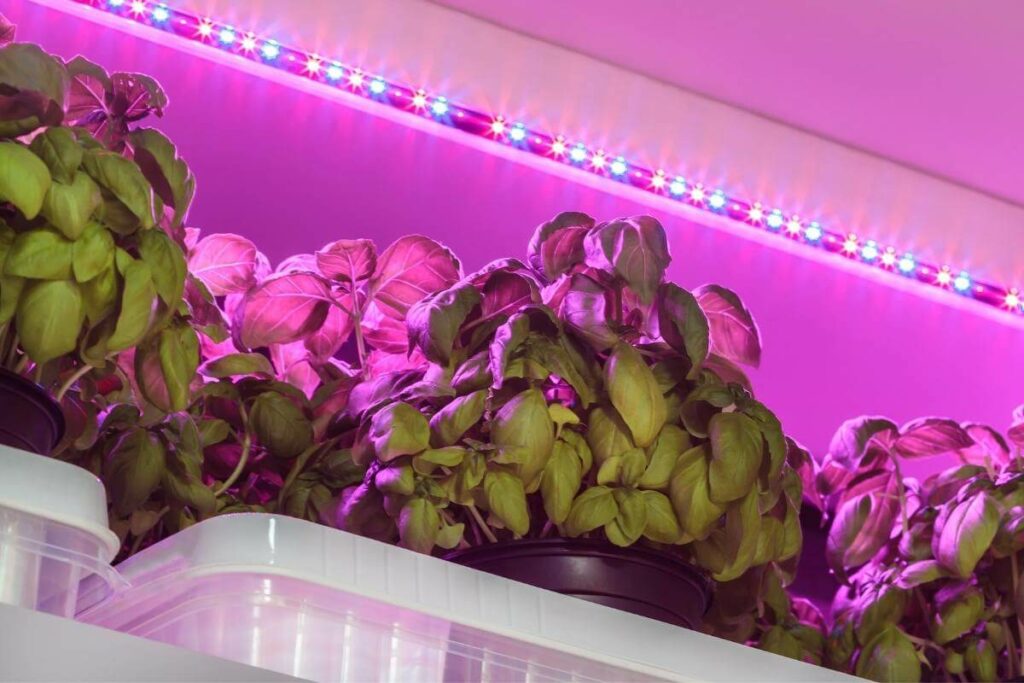
If potted in partial sun outdoors or by a window indoors, allow around 6-8 hours of sun.
When potted indoors, your basil will thrive if potted by a window that receives a lot of direct sunlight.
If growing in winter or areas with artificial lighting, it will require at least 10-12 hours of direct light per day.
Basil, like most herbs, requires a lot of red and blue light to photosynthesize.
An LED grow light that emits the full-light spectrum is the best, and alternatively, fluorescent grow lights that emit a lot of red and blue light are also ideal for growing basil indoors.
Basil Growing Indoors ‘vs’ Outdoors
Basil grows equally well indoors under grow lights or outdoors with access to at least 6 hours of direct sunlight per day.
If you’re living in a region where temperatures go above 95°F (35°C), you may find that prolonged exposure to the direct sun will burn your basil plant.
Works Best: If you’re planning to grow basil indoors under fluorescent or LED lights, you’ll need to place your lights around 3-4 inches directly above your plants, and don’t let your basil leaves touch the light as they will burn.
Bay Leaf, Chives, Mint, or Parsley
All of these herbs grow perfectly well indoors or outdoors with the right lighting conditions:
- If potted outdoors they will need at least 6 hours of sun per day, or around 8 hours per day if in part shade.
- If they’re potted indoors, you’ll need to provide a location where they can access some direct sun.
- If you’re planning to grow them with artificial light, then choose a light that emits full-spectrum light such as LED lights.
- They’ll need around 12 hours of light per day from a grow light.
Conclusion
Growing herbs year-round is an enjoyable and hugely rewarding experience, and there’s nothing more satisfying than trimming fresh herbs to use in cooking.
It’s also inexpensive and relatively easy to do once you have the right lighting conditions or placement outside.
One key tip is to make sure you choose good quality fluorescent or LED grow lights and position them correctly to provide your herbs with enough red and blue light to stimulate photosynthesis.
As a rule of thumb, most herbs require at least 6 hours of sunlight daily, or around 12 hours of artificial light each day.
Also Helpful
- How To Grow Shishito Peppers in Pots?
- Best Plants for Offices with No Windows
- 17 Climbing Indoor Plants with Images
- Philodendron Moonlight Vs. Golden Goddess
- How to Revive Your Rubber Plant: 6 Tips to Help Your Rubber Tree Thrive Again
- Your Money Tree Lost All Its Leaves – Will It Sprout Again?
- Why Is My Money Tree Dying? 5 Possible Reasons and Solutions
- Do Jade Plants Bloom – Fact or Fiction?
- Plants with Heart Shaped Leaves (Secret Language of Leaves)

